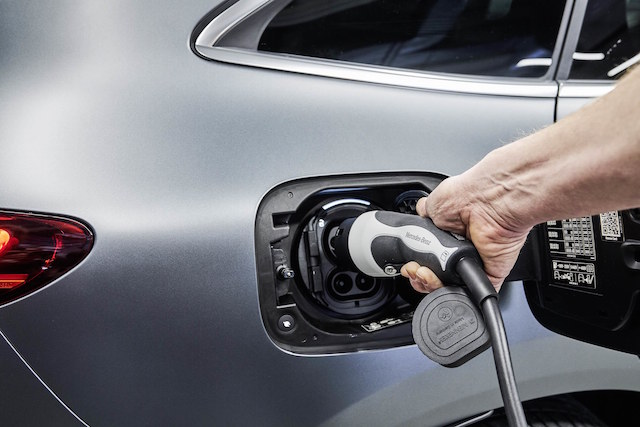
This is an edited version of a story that appeared in magazine Wired.
The rush to electric vehicles (EVs) is creating bottlenecks in the manufacturing of raw materials for the batteries that help power them.
Global production of EVs is predicted to top 4 million cars this year, rising to 12 million in 2025. In Europe alone, 540,000 electric cars will be sold in 2020, up from 319,000 last year.
But for that to happen, apart from the gigafactories needed to build the high-density batteries, there is the question of the crucial minerals that make them work: lithium and cobalt. And the gold rush to mine them has already begun.
Jaguar Land Rover (JLR) is to pause production on its I-Pace EV, blaming it on shortages at battery maker LG Chem. “Currently EV uptake is arguably being constrained more by lack of manufacturing capacity than anything else,” says Paul Anderson, JLR’s co-director of strategic elements and critical materials.
“Lack of battery manufacturing capacity is a key part of this, which is why there is the rush to build gigafactories.”
A lack of gigantic factories is a problem that can be relatively easily solved. “In June 2019, there were 91 factories in the pipeline for producing lithium-ion cells around the world, of which around half were already in production the previous year,” says Gavin Harper, research fellow at the Faraday Institution, a battery research group.
“It’s been predicted that as demand for electric vehicles surges, there could be constraints around the key strategic elements and critical materials needed for EV battery manufacture in the future,” he said.
Aside from the usual hurdles of sourcing and extracting deposits and processing material for use, the key ingredients for EV batteries face geopolitical upheaval including trade wars, local protests, and raise human rights and environmental concerns.
That will cause “structural undersupply,” says Andrew Leyland, head of strategic advisory at British specialist company Benchmark Mineral Intelligence, and could wreak havoc on EV supply chains just as the industry is hoping to go mainstream.
Look at lithium, said Harper. At the moment, there is too much of it. Australia, Argentina, and Chile provided 91 per cent of supply in 2017. But a slump in demand caused by a weak automotive market and a reduction in grants for buying such cars in China has slowed the pace of mining and processing plant construction.
Back in 2015, there were maybe 15 such lithium mines, said Leyland. “Now you’re closer to 30, 35.” Most of those are in Australia, now the world’s biggest producer of lithium. China is its biggest customer and is also making and buying the most EVs.
“This is starting to worry a lot of OEMs (original equipment manufacturers),” says Leyland, pointing to the US-China trade war and President Trump’s regular tweets about it.
“People don’t want a single point of failure in their supply chain — you can’t really invest billions of dollars and then overnight, one tweet means an export tariff makes your business unsustainable.”
Lithium mines also face protests from farmers in Portugal and indigenous communities in Chile, locking mining efforts in the country, raising questions not only of supply but ethics — with both challenges faced by cobalt.
Unlike lithium, much of cobalt is found in one place, the Democratic Republic of the Congo. It provides 59 per cent of the world’s supply, and is the object of concerns about child labour.
Cobalt is also one of the most expensive metals in EV batteries, costing between US$33,000 and US$35,000 per tonne.
Research from the Massachusetts Institute of Technology (MIT) suggests there’s not enough ability to mine and process the material to meet demand. The research suggests that demand could reach 430,000 tonnes in the next decade, or 1.6 times today’s capacity.
One solution could be finding an alternative to cobalt in batteries. One major Chinese manufacturer, Contemporary Amperex Technology (CATL), already produces batteries that use phosphate instead of nickel-cobalt-aluminum or nickel-manganese-cobalt combinations.
In 2018, Tesla CEO Elon Musk pledged that his company would stop using cobalt in the next generation of batteries, but phosphate batteries don’t have the same capacity as cobalt ones.
One answer to the supply shortage could be recycling, which would help to reduce the environmental impact of EV batteries while also reusing critical materials, meaning fewer need to be mined and processed.
“Some of these batteries will go on to live ‘second lives’ in other applications that are potentially less demanding,” says Harper. “However, the eventual fate of all lithium-ion batteries should be that they are recycled when finally no longer usable.
“Of course, it will take some time before significant numbers of EV batteries reach the end of life for this to be a resource—in the meantime, supplies for manufacturing EV batteries will have to come from primary resources, but we believe recycling will have a crucial role to play in the future, providing materials for our automotive industry.”
That’s just one solution to a wide-ranging problem. The shift to EVs needs batteries. Right now, their production is the bottleneck, but the next one is likely to be supply. Then there’s the coronavirus …
